This is the purpose of the Community Health Needs Assessment. A CHNA includes multiple moving parts and contributors who:
- interview community leaders;
- hold stakeholder meetings;
- conduct patient surveys and query results;
- establish and participate in community focus groups; and
- analyze population health metadata.
These steps can be time-consuming and unclear, leaving many to question whether they’re accurately evaluating their community’s needs — or just trying to meet compliance requirements. But, what if there’s a better way?
In this blog, we’ll break down three steps you can use to simplify your CHNA, so you can drive the best outcomes for patients and providers.
Three ways to simplify the CHNA
1. Prepare
Not-for-profit hospitals must conduct and submit a CHNA every three years to maintain their tax-exempt status. Without a flexible and scalable process, the time gap between assessments can feel like starting over. A successful CHNA begins with a timeline and a framework. Standardization can help hospitals collect, organize and streamline disparate data. This includes tools, templates and programming that imports new requirements and maintains existing ones.
By staying ahead and well organized, you’ll give yourself enough time to administer a quality CHNA. Get more information using our essential Community Health Needs Assessment (CHNA) guide.
2. Coordinate
According to the National Network of Public Health Institutes, an effective CHNA involves “cooperation, collaboration and partnership to help achieve common priorities and inform partners’ investment strategies.” Together these elements help create a shared sense of ownership.
To achieve this, it’s important that hospitals identify which community partners should be invited to participate, what roles they can play in the assessment and what they would be responsible for and when. These partners range from public health agencies and community-based organizations to local businesses, employers and health plans.
When so many people are involved, superior coordination can move a CHNA exponentially forward. For example, this could come internally from a hands-on coordinator or externally from DataGen’s team of population health analysts. It’s also crucial for the assessment of proposed initiatives and review of prior results. With skill and experience, each CHNA report can create built-upon gains.
3. Implement
The CHNA drives community health improvement from community data. These metrics are used as evidence to create health interventions that help people thrive.
Before you can implement a CHNA plan, it is crucial to capture and collect data in a meaningful way, taking great care to make sure your analyses are interpreted accurately. This way you can identify the best ways to make important care interventions.
While past CHNA results can still evolve community infrastructure, they can also bias future analysis. If you use past information, make sure that it’s still relevant to your new community-based data and identifies unmet needs. Also, be prepared to explain why some interventions may have a lower priority and how you’ll address them nonetheless.
Don’t simplify your CHNA alone
Hospitals that prepare well and in advance for their CHNA launch can generate maximum results. If your hospital feels underprepared for your next CHNA, contact DataGen for best-in-class CHNA preparation. Our experts will be there to help you throughout every stage of the process with toolkits, templates and expertise, ensuring you hit essential requirements while identifying vital community health needs.


Comments
Post a Comment